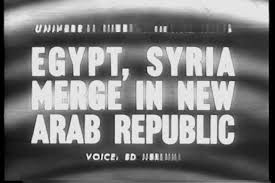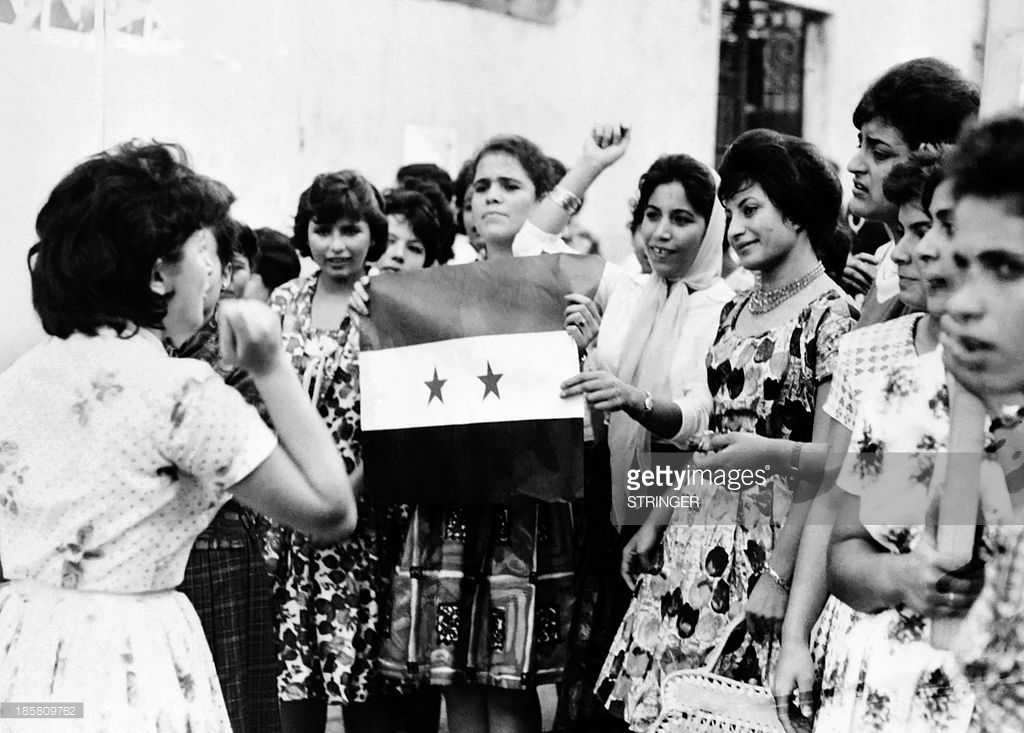United Arab Republic

The dream of an Arab-Muslim state stretching across the Middle East has never been realized, despite British promises to help establish one, which were broken with the Sykes-Picot Agreement. But the United Arab Republic (UAR) - a union of Egypt and Syria which lasted from 1958 to 1961, was the strongest attempt to conceive a lasting Arab state.
As Syrian political parties on the left and right vied for power, Syria became enmeshed in a cycle of political instability and short-lived coalition governments. The Ba’ath Party, under pressure from the Syrian Communist Party, was instrumental in approaching Gamal Abdel Nasser in Egypt to propose a union between the two Arab nations early in 1968.
Recognizing the difficulties posed by the lack of a contiguous border, with Israel between them, and the political and economic differences between the two countries, Gamal Abdel Nasser was reluctant to join such a union. The Ba’athists, who mistakenly thought they would control the direction of the union from behind the scenes, convinced Nasser to become the leader of the union.
A February 1958 plebiscite on the union received nearly unanimous support from the citizens of both Egypt and Syria, and the union was implemented in late February. The Yemeni imam, or ruler, also joined the union, but Yemen was never fully integrated into the UAR.

Gamal Abdel Nasser served as president, and the Syrian leader Shukri al-Quwatli became vice president, but the real power rested with Egypt, which was by far the larger, more populous, and more powerful of the two nations. Shortly after the establishment of the UAR, Gamal Abdel Nasser made a tumultuous tour of Syria, where he received large popular support.
It was the apogee of pan-Arabism, but the honeymoon was short-lived. Under the terms of the union all Syrian political parties were dissolved, although the Ba’ath Party had anticipated that it would play a key role.
In addition, Egyptian political and economic policies, including land reform, were instituted. Although health services and conditions for the working and urban middle classes improved the Syrian upper class, many Ba’athists and the military grew increasingly disenchanted with Nasser.
Initially Nasser’s close associate General Abd al-Hakim Amer was appointed to oversee the government in Syria, but by 1960 the former Syrian interior minister, Abd al-Hamid Sarraj, became the strongman within the administration. Syrians chafed under his heavy-handed rule.
The UAR also faced considerable opposition from conservative Arab regimes and Western nations, especially the United States. To counter Nasser’s growing strength, the Hashemite monarchs in Jordan and Iraq announced a union between their two nations, but it was never really implemented.
Saudi Arabia was also opposed to the union and feared the political shift toward the left. The United States viewed the union through the prism of the cold war and was determined to prevent possible Soviet expansion into the region.
The civil war in Lebanon and the revolution in Iraq, both in 1958, accentuated the rivalries between the progressive, leftist Arab regimes dominated by Gamal Abdel Nasser and the conservative monarchies in what has been called the Arab cold war. The West blamed Gamal Abdel Nasser for both the Lebanese civil war and the Iraqi revolution. Although Nasser supported both, he was not primarily responsible for either.
The nationalization of banks and many large businesses in the summer of 1961 created a form of state socialism that was unpopular in Syria. In reaction, army officers led a coup in September 1961 to withdraw from the union, and Gamal Abdel Nasser reluctantly agreed to the breakup.
Gamal Abdel Nasser blamed Syrian feudal elites and conservative Arab regimes, particularly Saudi Arabia, for the collapse of the union. For the remainder of the 1960s he turned increasingly to the left and to support from the Soviet Union. In Syria the breakup of the UAR allowed the Ba’ath Party gradually to become the dominant political force.
Following the 1967 Arab-Israeli War, Hafez al-Assad, a committed Ba’athist, seized power and established a regime that continues into the 21st century. Although both Gamal Abdel Nasser and the Ba’ath Party continued to advocate Arab union, no effective political or economic unions among Arab nations were ever formed after the collapse of the UAR experiment.
